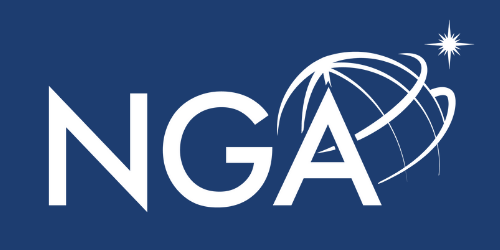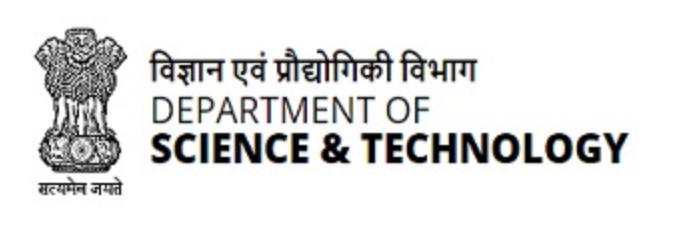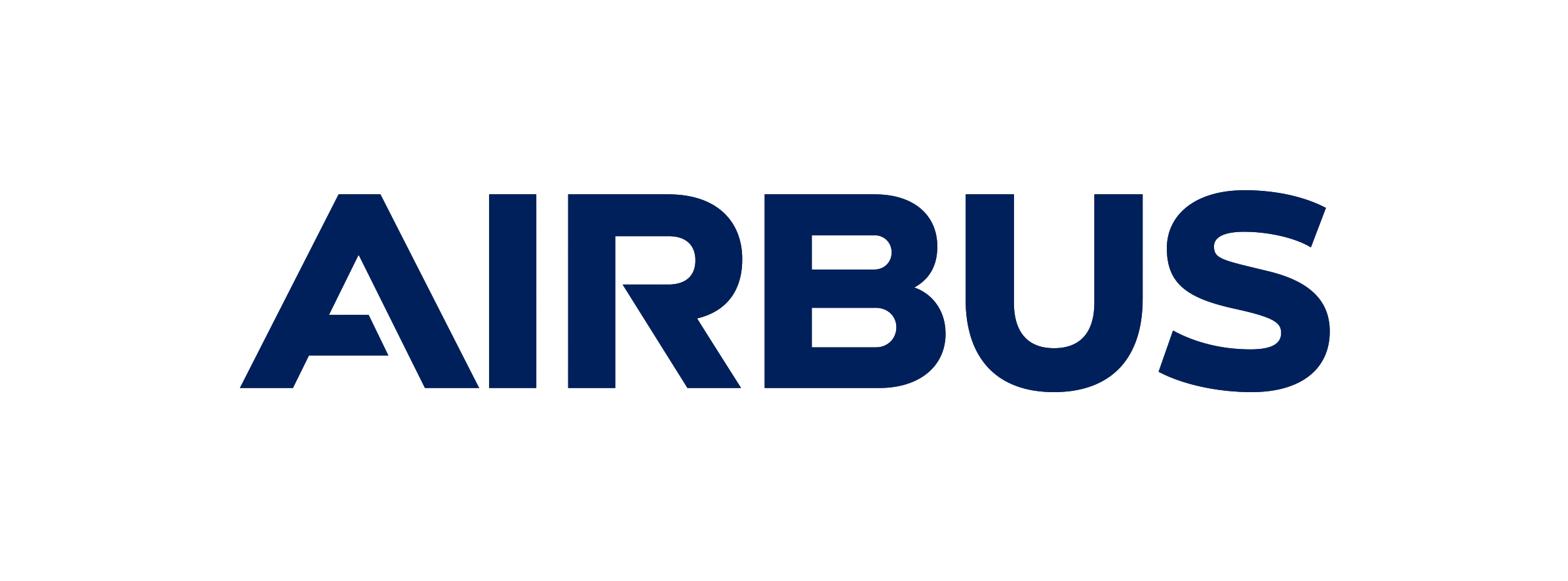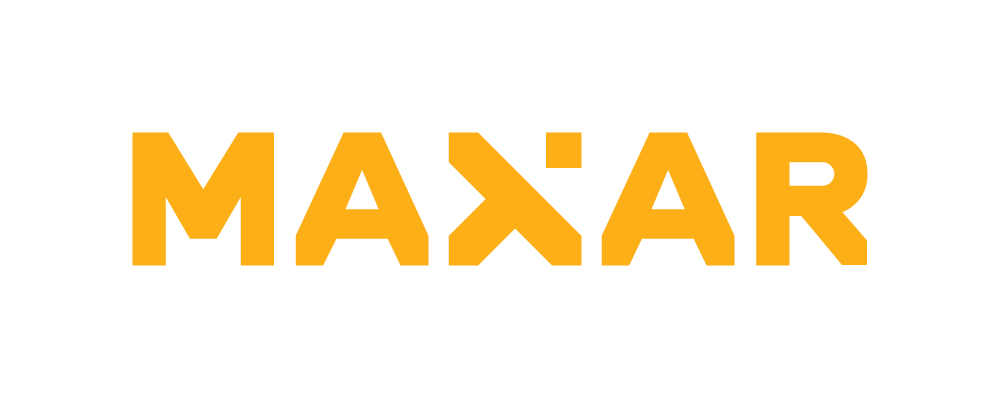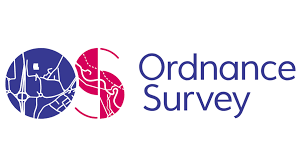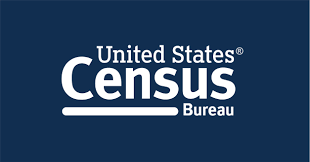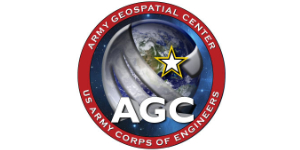OGC Testbed 10
For more information please contact innovation@ogc.org

OGC Testbed 10 (OWS-10) brings new capabilities
Table of Contents
Introduction
In the OGC Testbed 10 (“OWS-10”), government, private sector and university organizations collaborated in a rapid prototyping activity to develop standards and best practices that are aimed to:
• Reduce technology risk
• Reduce technology lifecycle costs
• Mobilize new technologies
• Expand markets and improve customer choice
Activity Threads
OGC Testbed 10 was conducted and builds on the outcomes of prior OGC initiatives (http://www.opengeospatial.org/resource/demos) and was organized around the following activity threads:
• Cross-Community Interoperability (CCI): Increase Geospatial community interoperability by building on CCI OWS-9 work in semantic mediation, volunteer geographic information (VGI), provenance and data quality, and Global Gazetteer. Explore the potential of interoperability in the hydrology domain utilizing semantic mediation and ontologies to more easily share and visualize geospatial data.
• Open Mobility: Explore the geospatial standards requirements needed to support the growing emerging mobile environment where client applications are mobile and information services are mobile and increasingly distributed across cloud infrastructures. The Open Mobility thread leverages the successes achieved in OWS-9 in the areas of GeoPackage and new OWS Context encodings. The OWS-10 demo showed how GeoPackages can be created by means of a Web Processing service using OWS Context documents, imagery annotations and the US National Information Exchange Model (NIEM). The demo also showed stress-testing of OGC services in cloud deployments. encodings.
• Aviation: Develop and demonstrate the use of the Aeronautical Information Exchange Model (AIXM) and the Flight Information Exchange Model (FIXM), building on the work accomplished in prior testbeds to advance the applications of OGC Web Services standards in next generation air traffic management systems to support European and US aviation modernization programs.
Sponsors
The OGC Testbed 10 sponsors who contributed requirements, devised scenarios and shared the costs of development were:
- AGC (Army Geospatial Center, US Army Corps of Engineers)
- ESA (European Space Agency)
- EUROCONTROL
- FAA (US Federal Aviation Administration)
- GeoConnections – Natural Resources Canada
- Harris Corporation
- Lockheed Martin Corporation
- NGA (US National Geospatial-Intelligence Agency)
- NOAA National Weather Service
- USGS (US Geological Survey)
- UK DSTL (UK Defence Science and Technology Lab)
Testbed Milestone Schedule
| Milestone | Date |
|---|---|
| Concept Development | Jan 2013 – May 2013 |
| RFQ Release | July 15, 2013 |
| Q&A Webinar | Aug 6, 2013 |
| RFQ Proposals Due | Aug 26, 2013 |
| Kickoff (Aviation) | Sep 27, 2013 (Frascati Italy) |
| Kickoff (CCI, Open Mobility) | Oct 7-9, 2013 (GMU Fairfax) |
| TC Presentation and Demo | Mar 27, 2014 |
| Final Deliverables | April 30, 2014 |
| Testbed 10 Testbed Webinars | 27 May (Aviation), 28 May (CCI-OM) |
Participating Organizations
- 52North
- Arizona State University
- Atmosphere
- Augmented Technologies
- The Carbon Project
- CSIRO
- Cloudant
- Compusult
- Comsoft
- CubeWerx
- EADS Astrium/CNES
- Envitia
- Frequentis
- Galdos
- GeoMatys
- GIS.FCU
- George Mason Univ
- iGSI
- ImageMatters
- Interactive Instruments
- Jacobs University
- Luciad
- m-click
- the PYXIS Innovation
- Snowflake
- Terradue
- UAB-CREAF
- Univ of Southern California
- WiSC
Demonstrations and Webinars
A presentation and demonstration for OGC Testbed 10 was held on March 27 at the OGC 20th Anniversary Technical Committee Meeting in Washington, DC.
Slides for this presentation and demonstration are available for download from the OGC Portal here:
https://portal.opengeospatial.org/files/?artifact_id=59775
In addition, two webinars were conducted on 27 and 28 May as described below.
Aviation Demo Webinar
The Europe-to-US flight scenario in the aviation information sharing demonstration shows the value of being able to use the Aeronautical Information Exchange Model (AIXM), Weather Information Exchange Model (WXXM) and the Flight Information Exchange Model (FIXM) in next generation air traffic management systems. The webinar highlighted the results of work on a number of building blocks for global, interoperable Aviation information management and exchange of terrain data, human factor based portrayal of Digital NOTAMs, compliance testing, and support of AIXM in development tools.
The OGC plays an active role in developing interoperability within and between aviation modernization programs (e.g. European and US).
The video recording of this webinar is available to view on the OGC YouTube Channel at the following location:
http://www.youtube.com/watch?v=UXDCRkMVSa4&feature=share&list=UUR5YGb1pVBBFV-XNA6mA0gg&index=2
Cross-Community Interoperability & Open Mobility Demo Webinar
The Cross-Community Interoperability (CCI) webinar was conducted to showcase the work accomplished in semantic mediation, volunteer geographic information (VGI), Global Gazetteer and provenance and data quality. In addition, new interoperability capabilities were demonstrated in the hydrology domain, utilizing semantic mediation and ontologies to more easily share and visualize geospatial data. The demostration showed how US and Canada can now map hydrologic features to an international standard using the World Meterological Organization (WMO) HY_Features model and more easily crosswalk their data to and from the two country’s different hydrology model formats.
In the Open Mobility thread, participants addressed requirements for location interoperability in the growing emerging mobile environment. In this environment, mobile client applications are increasingly dependent on diverse information services distributed across cloud infrastructures. The OGC GeoPackage Encoding Standard, a SQLite-based mobile-friendly file format, now has a web Processing Service API to automate the process of creating GeoPackages that get their data from other OGC services like WFS and WMTS. Keeping GeoPackages in sync with their “parent” data sets was also addressed. And the new encoding format to communicate shared situational awareness, OWS Context, was excercised to create map annotations, integrate with NIEM, and describe the contents of GeoPackages.
The video recording of this webinar is available to view on the OGC YouTube Channel at the following location:
http://www.youtube.com/watch?v=3WwaLyZeSug&list=UUR5YGb1pVBBFV-XNA6mA0gg&feature=share
Engineering Reports
OGC Testbed 10 yielded a total of 19 Engineering Reports (ERs) across the 3 main activity threads: Aviation (6), Cross-Community Interoperability (7), and Open Mobility (6). The ERs are being reviewed for final publication in the weeks ahead. As these ERs are approved for release, links to them will be provided on these pages. Findings from Testbed 10 will be reviewed in the OGC’s Standards Working Groups, leading to additions and improvements to various OGC documents.
Engineering Reports will be available for download from the OGC’s Public Engineering Reports page located here:
http://www.opengeospatial.org/standards/per
Aviation ERs
| OGC # | Aviation ERs | Editor |
|---|---|---|
| 12-027r3 | OGC Testbed 10 WFS Temporality Extension Discussion Paper Revision | COMSOFT |
| 14-000 | OGC Testbed 10 GML for Aviation Conformance Testing Engineering Report | Galdos |
| 14-006r1 | OGC Testbed 10 Aviation Recommendations for the Exchange of Terrain Data Engineering Report | Luciad |
| 14-007 | OGC Testbed 10 Aviation Binding AIXM to Development Tools Engineering Report | 52 North |
| 14-008 | OGC Testbed 10 Aviation Architecture Engineering Report (overall) | 52 North |
| 14-037 | OGC Testbed 10 Aviation FIXM GML Schema ER | Snowflake |
| 14-038r1 | OGC Testbed 10 Aviation Dissemination of Weather Data Engineering Report | Frequentis |
| 14-039 | OGC Testbed 10 Aviation Human Factor Based Portrayal of Digital NOTAMs Engineering Report | ATMOSPHERE |
Aviation ER Summaries:
12-027r3 Testbed 10 Web Feature Service Temporality Extension Discussion Paper by Timo Thomas
This revision to the Discussion Paper summarizes the observations made during previous Testbeds 7, Testbed 8 and this Testbed 10 that indicate some key requirements for temporality to address aviation concerns were not met. This revision to the Discussion Paper shows that these requirements are not specific to AIXM 5, but more generally apply to any data model featuring temporality. To overcome the shortcomings, a proposal is made for an extended type of WFS query: a dynamic feature query.
14-000 Testbed 10 Engineering Report: GML for Aviation Conformance Testing by R. Martell
Summarizes the work undertaken in Testbed 10 to extend the GML 3.2.1 conformance test suite in order to validate geometry representations that may appear in aviation (AIXM) data sets. The OGC Compliance Program provides compliance tests and a compliance certification program that technology providers can use to validate their implementations and earn the right to use the “OGC Compliant” brand. As demonstrated, the OGC Compliance Program can help domains such as Aviation provide compliance testing and certification for domain-specific encodings based on OGC standards.
14-006r1 Testbed 10 Recommendations for the Exchange of Terrain Data by Daniel Balog
Investigates the possibilities for INSPIRE compliant web-based access to terrain data for aviation purposes. All International Civl Aviation Organization (ICAO) member states need to provide chart, terrain and obstacle data in an electronic form, fully relying on the ISO 19100 series of geographic information standards. TIXM, OGC GeoPackage, and Elevation Surface Model (ESM) options for the exchange of terrain data are compared. The report’s recommendations for the exchange of terrain data in Aviation appliications will be useful for those looking at open standards for exchange of terrain data in other domains as well.
14-007 Testbed 10 Report on Aviation Binding AIXM to Development Tools by Matthes Rieke
Provides an overview of automatically generating data bindings for the Aeronautical Information Exchange Model (AIXM), version 5.1, which is based on the OGC Geographic Markup Language (GML) Encoding Standard, version 3.2.1. It describes the programming language environments for which these bindings have been created and evaluates results in terms of semantic integration and performance. This report summarizes the approach, the observed issues while creating these bindings, the integration into development tools (IDEs, application servers) and an evaluation in terms of language integration and performance.
14-008 Testbed 10 Report on Aviation Architecture by Johannes Echterhoff
Describes the architecture that was implemented in the Testbed 10 Aviation thread. It provides descriptions of all software components involved in the Aviation architecture as well as a dedicated chapter focusing on the evaluation and design of FIXM 2.0. Here, a special focus lies on the integration of the data provisioning components, which are implementations of the OGC Web Feature Service Interface Standard and the candidate OGC Event Service Interface Specification.
14-037 OGC Testbed 10 FIXM GML Schema by Snowflake Software
Demonstrates that the benefits of interoperability and open standards architecture are agnostic of exchange model and that the Flight Information Exchange Model (FIXM) can be implemented following the same best practice as Aeronautical Information Exchange Model (AIXM) and the Weather Information Exchange Model (WXXM) and therefore developers using any of these exchange models can follow the same best practice to realize the same operational benefits.
14-038r1 Testbed 10 Aviation Dissemination of Weather Data Engineering Report by Ronald Berger
Describes how to provide an OGC-compliant Web Coverage Service (WCS) HTTP GET interface to the NOAA National Weather Service’s large-scale National Digital Forecast Database (NDFD), which has been operation for 10 years, services millions of hits each day, and is not based on OGC standards.
14-039 Testbed 10 Aviation Human Factor Based Portrayal of Digital NOTAMs by Thibault Dacla
Provides an assessment of the guidelines provided by the SAE in their latest published document regarding portrayal of Notices to Airmen (NOTAMs) in the aircraft flight deck. Participants analyzed the recommendations of the SAE comity and evaluated the feasibility of applying them using OGC standards, and in particular, the OGC Symbology Encoding standard, version 1.1.
Cross-Community Interoperability ERs
| OGC # | CCI ERs | Editor |
|---|---|---|
| N/A | OGC Testbed 10 CCI Change Requests | Envitia |
| 14-001 | OGC Testbed 10 Provenance ER | UAB |
| 14-016 | OGC Testbed 10 Volunteered Geographic Information (VGI) ER | 52North |
| 14-021r1 | OGC Testbed 10 Profile Interoperability ER | Envitia |
| 14-029r2 | OGC Testbed 10 Virtual Global Gazetteer ER | IGSI |
| 14-048 | OGC Testbed 10 Hydro Model Interoperability ER | GMU |
| 14-049 | OGC Testbed 10 Ontology ER | iGSI |
Cross-Community Interoperability ER Summaries
14-001 Testbed 10 Provenance Engineering Report by Joan Maso, Guillem Closa, Yolanda Gil and Benjamin Pross
Describes implementations of the OGC Web Processing Service (WPS) Service Interface Standard that process data and need to record detailed provenance information and provide this information to clients that will present it. Provenance provides important information about the origins of data that is crucial to assessing its quality, including: 1) the data sources used to generate the data, 2) the processes used and their characteristics, and 3) the actors and other entities involved in those processes. It proposes an approach to use the W3C PROV standard with geospatial information and it reviews the applicability of ISO19115 and ISO19115-2 lineage.
14-016 Testbed 10 CCI VGI Engineering Report by Arne Bröring, Simon Jirka, Matthes Rieke, Benjamin Pross and Simon Jirka
Describes an approach for integrating Volunteered Geographic Information (VGI) into a spatial data infrastructure. It includes optimization ideas, service change recommendations, and lessons learned. Using the OGC Observations & Measurements (O&M) data model enables tranformation of heterogeneous VGI data into a standardized model and format. Because O&M is a narrow OGC Geography Markup Language (GML) application schema, it ensures a high degree of interoperability. Using the candidate OGC Event Service Interface Specification we can also incorporate real time complex event processing on incoming O&M-encoded VGI data streams.
14-021r2 Testbed 10 CCI Profile Interoperability Engineering Report by Gobe Hobona, and Roger Brackin
Presents an analysis and assessment of interoperability between Digital Geographic Information Working Group (DGIWG), National System for Geospatial-Intelligence (NSG) and UK Ministry of Defence (MOD) profiles of the OGC Web Map Service (WMS) and Web Feature Service (WFS) Standards. The report describes the similarities and differences between interfaces (including operations and their parameters) offered by services based on each of the three profiles of both standards.
14-029r2 Testbed 10 CCI Virtual Global Gazetteer Engineering Report by Martin Klopfer
Describes an approach to gazetter linking, demonstrated by accessing the New Brunswick Gazetter and geonames.org to provide access to additional information for a given NGA (non-domestic names) or USGS (domestic names) location. It expands gazetteer functionality to include gazetteer conflation and semantic gazetteer linking. OGC Filter Encoding Standard extensions add text search operators, fuzzy string-matching operators, and filtering by country, feature description or spatial constraints.
14-048 OGC Testbed 10 CCI Hydro Model Interoperability Engineering Report by Eugene Yu and Liping Di
Documents best practices and recommendations developed for enabling interoperability among the hydrologic data models used by Hydrological Services of Canada and the United States using a common hydrologic feature model, namely HY_Features, developed in the joint WMO/OGC Hydrology Domain Working Group. HY_Features is currently an OGC Discussion Paper intended to be proposed to OGC as a specification for identifying and referencing hydrologic features.
14-049 Testbed 10 OWS CCI Ontology Engineering Report by Ingo Simonis
Addresses three CCI ontology topics: 1) A general examination of ontologies in the context of OGC data modeling, handling, and organization with the goal of defining a consistent set of ontologies implementing solid theoretical foundations and semantics; 2) Core ontologies for representing incident information used by the US National Incident Management System (IMS), with the goal to improve interoperability between different IMS symbology sets used across multi-level jurisdictions; and 3) ontology mapping between hydrology feature models using SPARQL and OWL2.
Open Mobility ERs
| OGC # | Open Mobility ERs | Editor |
|---|---|---|
| 14-002 | OGC Testbed 10 OWS Context with Annotations ER | UAB CREAF |
| 14-009r1 | OGC Testbed 10 OWS Context JSON Interoperability ER | Terradue |
| 14-013r1 | OGC Testbed 10 Service Integration ER | Cubewerx |
| 14-017 | OGC Testbed 10 OWS Context in NIEM ER | Envitia |
| 14-028r1 | OGC Testbed 10 Performance of OGC Services in the Cloud ER | Cubewerx |
| 14-058r1 | OGC Testbed 10 GeoPackaging ER | Cloudant |
Open Mobility ER Summaries:
14-002 Testbed 10 Context Annotations Engineering Report by Joan Maso
Addresses the need for a standard way of providing spatial applications with facilities for highlighting, describing and commenting on spatial features, or parts of such features, or particular spatial regions. It addresses graphical representation of the annotations and the features that are annotated. It proposes a generic data model and a set of mappings into different popular encodings. It is applicable to the OGC Web Services Context Document (OWS Context, GMLJP2 and any other standards that can require annotations.
14-009r1 Testbed 10 OWS Context JSON Interoperability Engineering Report by Pedro Goncalves
Identifies the generic rules for obtaining JSON documents directly from existing XML documents and schemas elements. It is primarily focused on a JSON encoding design for the OGC Web Services Context Conceptual Model, but the guidelines are presented in a general way. Thus the report is also useful as a set of guidelines for defining and using JSON encodings with other services that implement interfaces using OGC standards.
14-013r1 OGC Testbed 10 Service Integration Engineering Report by Panagiotis (Peter) A. Vretanos
Provides a technical description of changes to the OGC web service architecture baseline to support better integration among OGC Web Services that would allow better automated publishing and richer discovery of those services and related resources. The suite of OGC Web Services addressed in the report includes the OGC Web Map Service (WMS), Web Map Tiling Service (WMTS), Web Feature Service (WFS), Web Coverage Service (WCS), Catalogue Service – Web (CSW) Interface Standards.
14-017 OGC Testbed 10 OWS Context in NIEM Engineering Report by Gobe Hobona and Roger Brackin
Describes an approach for encoding a US National Information Exchange Model (NIEM) Request for Information (RFI) Information Exchange Package Documentation (IEPD) with an OGC Web Services Context (OWS Context) document embedded inside the IEPD. OWS Context facilitates configuration of a set of information resources – services and/or content – that are to be passed between applications. OWS Context is thus a potential enabler of operations across different federal agencies and Communities of Interest.
14-028r1 Testbed 10 Performance of OGC® Services in the Cloud: The WMS, WMTS, and WPS cases by Edric Keighan, Benjamin Pross, Hervé Caumont
This document characterizes the performance and scalability of OGC data services in the Cloud. Three use cases highlighting different geo-processing aspects of OGC data services have been developed, implemented, and benchmarked. Each use case is presented in a separate section of this document with performance results and discussions.
14-058r1 OWS 10 GeoPackage Engineering Report by Norman Barker
Describes the design and development of implementations of the OGC Web Processing Service Interface Standard that create a GeoPackage from an OWS Context document. The OGC GeoPackage Encoding Standard defines packages for exchange of diverse sets of geospatial data – vector geospatial features and / or tile matrix sets of earth images and raster maps at various scales. It also provides SQLite Extensions for direct use of such data.
Software Components
| Aviation Component | Participants |
|---|---|
| Web Feature Service – Transactional | m-click |
| Web Feature Service – Transactional | Snowflake |
| Event Service | 52 North |
| Aviation Client | Luciad |
| AIXM Binding Tool | 52 North |
| AIXM Validation Service | m-click |
| WCS Adapter for WGDS | GMU |
| GML Conformance Test Scripts | Galdos |
| Open Mobility Component | Participants |
|---|---|
| GeoPackage creator | CarbonProject, Cloudant, Compusult, Envitia, Luciad |
| GeoPackage client | Augmented Technology, Compusult, Envitia, Luciad |
| GeoPackage client with OWS Context | Augmented Technology, Envitia, Luciad |
| OWS Context Client | UAB CREAF |
| GeoPackaging WPS | Cloudant, Compusult, Envitia, Luciad |
| Cloud-based OGC service | Cubewerx, Geomatys/CNES, Terradue |
| Cloud infrastructure service | Amazon, GMU, Terradue |
| CCI Component | Participants |
|---|---|
| CCI OGC Client Apps | Pyxis |
| CCI OGC Web Services DGIWG WFS TDS Locking | interactive instruments |
| CCI OGC Web Services NSG WMS Profile Service | interactive instruments |
| CCI OGC Web Services (Catalog, etc) | Compusult |
| CCI OGC Web Services (National Map) | Compusult |
| CCI OGC Web Services DGIWG WMS | Envitia |
| CCI WPS 2.0 Conflation Service | 52North |
| CCI WPS 2.0 Conflation Service | Arizona |
| Hydro Mediation Service | GIS.FCU, CSIRO (in-kind advisory support) |
| Hydro Model Service | GIS.FCU |
| Local WFS | Compusult |
| NGA WFS-G | interactive instruments |
| Ontology Mapping Component | CSIRO |
| Ontology Mapping Component | Imagematters |
| Semantic Mediation Service | Imagematters |
| Semantic Mediation Service (virtual gazetteer service) | Envitia |
| USGS WFS-G | Compusult |
| Virtual Global Gazetteer Client | Pyxis |
| Virtual Global Gazetteer Service | CSIRO |
| WFS/WPS for VGI | 52North |
OGC testbeds are part of OGC’s Interoperability Program, a global, hands-on and collaborative prototyping program designed to rapidly develop, test and deliver proven candidate specifications into OGC’s Standards Program, where they are formalized for public release. OGC Interoperability Initiatives include test beds, pilot projects, interoperability experiments and interoperability support services – all designed to encourage rapid development, testing, validation and adoption of OGC standards.








